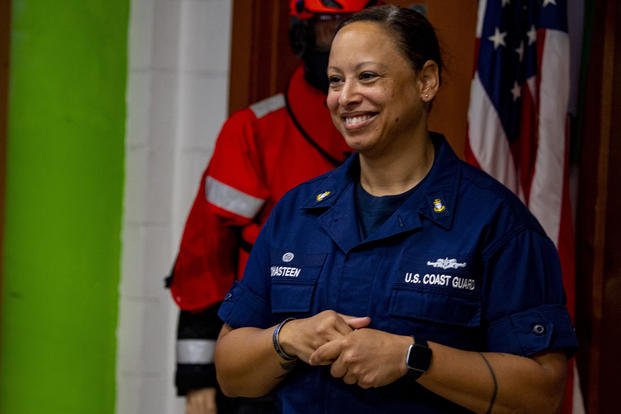I had a casual conversation this weekend with fellow U.S. Naval Academy alum, boxing champion and Marine infantry officer Mike Steadman of Fighting Mojo.
Our discussion eventually turned into sharing stories about mentoring young men and women. Former Capt. Steadman mentors inner-city kids through boxing and fitness in Newark, N.J. I have a program (Heroes of Tomorrow) outside of Annapolis, Maryland, where I prepare kids for free for military, police and firefighting service. We focus mainly on physical, teamwork and communication skills and aim to ace the screening tests and training relevant to various organizations (boot camp, assessment and selection programs, and police or fire academy).
While we talked, Steadman and I agreed that certain groups of youth need to have their lack of exposure to some basic skills that are part of being a military operator addressed. Many from urban areas, including minority groups, are not prepared adequately for the challenging combat arms assessment and selection programs in our military.
Preparedness comes in many levels. You have to be physically prepared (run, swim, ruck, lift, PT), but that will get you only so far. Having exposure to various field-craft skills, such as camping; land navigation, with a basic map and compass; weapons familiarization; and basic survival is critical to the success of all troops.
It is no secret that the military is recruiting minorities within officer ranks in every service. That isn't a problem, but it becomes one when they're set up for failure because they don't have the proper skills when being assessed for advancement. Exposure to field craft during pre-commissioning will build a foundation of learning those skills and take away the misconception that inner-city kids cannot do these jobs.
Many of these military schools also have peer evaluations, and if you are not performing with the pack, being a good team player or failing physical events, your chance of graduating is reduced greatly. Knowing you need to develop these skills is expected.
Here are some related stories on minority recruiting over the past few years:
- NYT -- USMC Ad Campaign to Seek Minority Officers (2012)
- USA Today -- Military Backslides on Ethnic Diversity (2014)
The officer numbers are low (5%-7%) -- with the Army having a 10%-15% rate -- but year after year, minority numbers in combat-related fields continue to remain much lower. The Defense Department actively is seeking to recruit more minorities in these fields, often overlooking the real issues. Minorities who grow up in urban communities tend to have a steeper learning curve to climb when attempting to transition into combat communities.
The basic skills needed in those groups are often taught in Boy Scouts or by family members or friends who are outdoorsmen. Hunting, fishing, camping and shooting are skills that many members of these combatant communities have, on and off duty. Screening potential candidates should involve more exposure to these skills, both to bridge the gap and lower the learning curve necessary to succeed in training. In a performance-based environment, high-stress professional military schools are not ideal for first-time exposure to these skills. They are not impossible to learn in that environment, just difficult. Many minorities think that because they do not hunt, build campfires or have ever been camping that they do not have a chance to complete the special ops or combat arms programs.
Some Recommendations
Some training is available to candidates who take the initiative by watching survivor-type TV shows, YouTube channels on outdoor survival activities and either of the following programs:
ROTC field exercises, with an emphasis on field craft USNA Semper Fi Society -- training exercise basics: The military already has access to these facilities and training programs. Adding a one- or two-day training exercise for interested cadets, midshipmen and delayed entry program inductees during their pre-combat arms training would expose them to such skills in a less stressful environment.
Being in the military requires initiative. Finding such training and education online -- if you are interested in serving one day -- is important to your success as any member of our Armed Forces. Knowing what skills you need to hone throughout your pre-military and pre-combat arms training is the issue.
Self-Study/Paid Programming
- GoRuck Challenges
- Recreational Equipment Inc. (REI)
- Boy Scouts of America
- National Outdoors Leadership School (NOLS)
Other (Free Training)
- YouTube Channels on camping, fire making, sleeping, tools, needed etc.
- Seven Basic Knots Videos -- exposure to knot tying
- Military YouTube Videos on fundamentals of marksmanship training
- Navy Sea Cadets
There is no experience like actual experience. Though videos are helpful and can help bridge the gap with first-time field training students, getting out and experiencing the environment is the goal. Early exposure will allow for all candidates to excel in professional training courses and build early confidence to help them succeed throughout their career.
Want to Know More About the Military?
Be sure to get the latest news about the U.S. military, as well as critical info about how to join and all the benefits of service. Subscribe to Military.com and receive customized updates delivered straight to your inbox.











